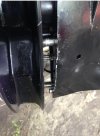- Joined
- Jun 23, 2024
- Messages
- 79
- Reaction score
- 18
- Points
- 8
- Age
- 67
- Location
- Annapolis MD
- Model
- Freedom 275
My GW Freedom 275 is on a lift off the Chesapeake Bay where it gets pretty cold here for a few months starting in December. I've been using the boat up until this week and have winterized the fresh water systems on the boat but haven't yet done anything to the engines before my scheduled shrink wrapping next week. This will be the first time I've owned a boat on the lift at my home and I've always had a winterization service done when putting a previous boat on the hard for the winter. So I'm wondering what I should do with the engines and fuel system other than adding a double dose of Stabil to the fuel and running it through the system? Is it really necessary to pull the plugs and fog the engines? I changed the oil in both engines about 15 hours ago so wasn't planning on a winterization oil change but, what are the thoughts of the collective wisdom here?


